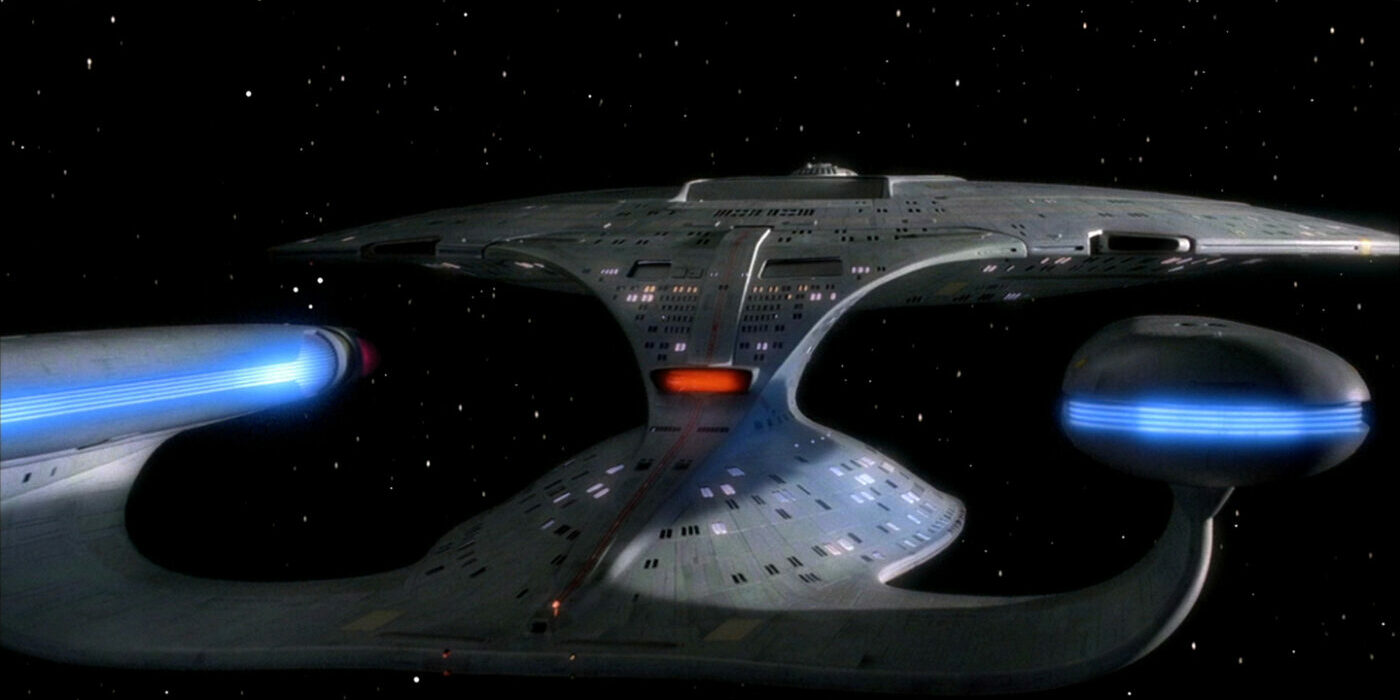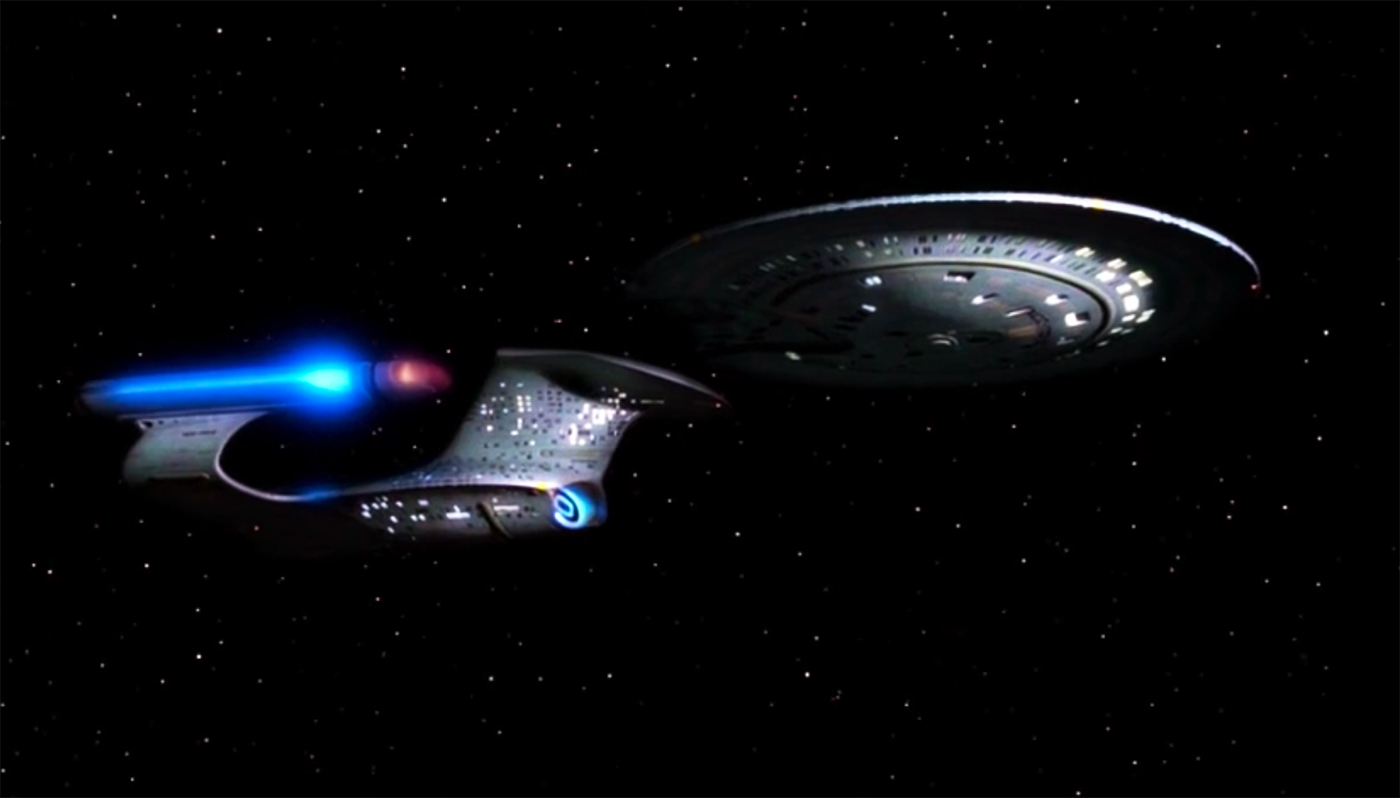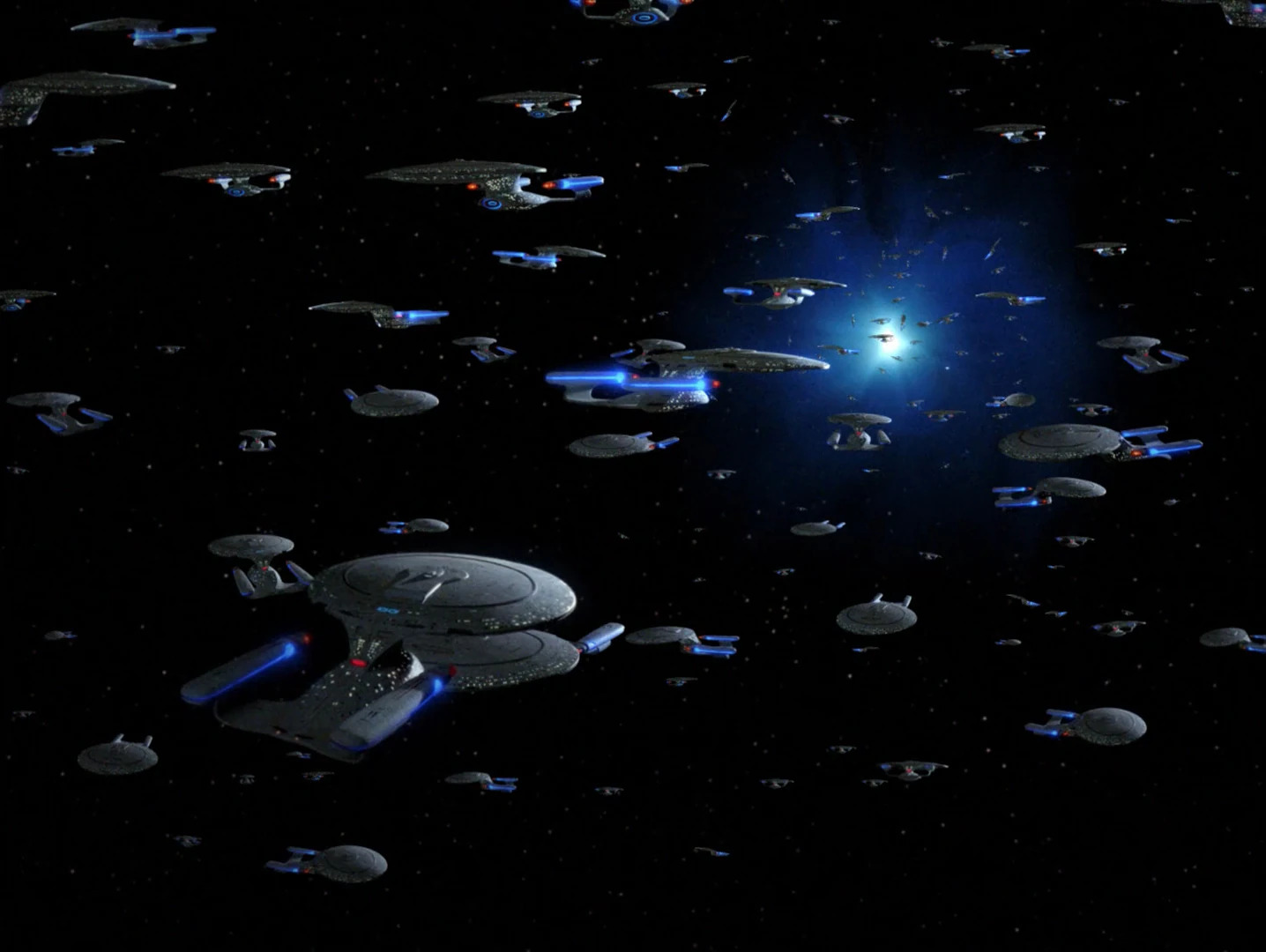Whether fighting the Dominion or saving the Federation or even the whole of the space/time continuum, the Galaxy-class starship can do it all.
If there is one iconic silhouette for the United Federation of Planets, at least in the 24th century, it is the twin nacelles and swooping saucer of a Galaxy-class vessel. These starships have traversed and expanded the final frontier, on missions as diverse and varied as the Federation itself. Capable of exploration, scientific research, carrying diplomatic envoys, or in times of need, missions of war, the Galaxy-class starship is a starship that defined what a capital ship of Starfleet should be.
And while no ship may be as storied as the flagship of the Federation, the USS Enterprise NCC 1701-D, that was far from the only Galaxy-class starship at Starfleet’s disposal. But what makes these ships so indispensable? For the answer, we turn to the engineers at the Utopia Planitia Shipyards.
Galaxy-class Starships – Flexible Design, Surprising Capabilities
A big part of the Galaxy-class’s flexible design lies in its two-bridge hull. After all, these vessels often carried whole families, in addition to research teams and diplomatic envoys. In times of extreme danger, the main Saucer section could be separated to initiate an emergency evacuation of non-military personnel, while the secondary hull with the nacelles still attached could serve as a battle bridge.
But together, a Galaxy-class vessel was more than the sum of its parts. That said, here is the sum of its parts: anywhere from 12/14 phaser banks, two torpedo launchers with a standard load of 250 torpedoes, which could be expanded for heavy combat missions, and a mine launcher, capable of deploying an antimatter mine field across a wide region of space.
Its advanced warp core, designed by Leah Brahms, allowed it to reach speeds of up to Warp 9.8 (though this limit was tested and broken on at least two different occasions). The typical vessel had an overall length of 641 meters, an overall width of 473 meters, and an overall height of 133 meters, with a gross mass of 5,000,000 metric tons.
A History Of The Future
The Galaxy-class starship was first developed at the Utopia Planitia Fleet Yards. As a new class, and as the potential flagship, the engineers behind the vessel employed a number of technologies from other prototype vessels at the time. The end result was the best of Starfleet’s technologies condensed into a single ship.
So armed, the first Galaxy-class vessels were launched on continuing missions throughout the Federation. Though none were more notable than the Enterprise. However, there was one instance where many such vessels came together.
During one of the many incidents, that is emblematic of the kinds of scenarios that Galaxy-class vessels found themselves in on a near-weekly basis, the Enterprise’s very own Klingon officer, Worf, returned from a tournament having had his DNA dosed with quantum flux owing to a subspace anomaly his shuttlecraft flew through. As a result, reality began to fracture, as multiple universe collided and more than 285,000 Galaxy-class vessels emerged into a single cross-dimensional space.
For any other ship, that might be the most momentous incident in their entire tour. But for a Galaxy-class vessel, it was Tuesday.
Live long and prosper!

Don’t Miss:
Read more at this site




